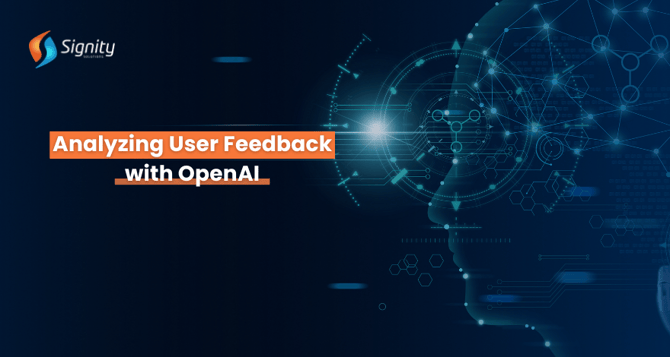Analyzing User Feedback with OpenAI Conversational Surveys
OpenAI Conversational Surveys offer a powerful tool to collect user feedback in a conversational format. By leveraging NLP techniques, businesses can gain valuable insights into user sentiments and preferences, enabling informed decisions to enhance products and services. With proper implementation, these surveys drive growth and improve customer satisfaction.

User feedback is invaluable for improving products and services. Gathering and analyzing this feedback efficiently can lead to actionable insights and enhance user satisfaction. OpenAI's Conversational Surveys provide a powerful tool to collect user feedback in a conversational format. In this article, we'll explore how to use Conversational Surveys and analyze the collected data with code snippets.
What are OpenAI Conversational Surveys?
OpenAI development of Conversational Surveys allow you to create interactive conversations to collect structured feedback from users. This versatile tool can be used for a variety of use cases, such as gathering feedback on software, products, or services, conducting user research, and more.
Setting Up Conversational Surveys
To get started with Conversational Surveys, you'll need an OpenAI API key. You can obtain one from the OpenAI platform. Once you have your API key, you can use it to create and manage surveys.
Step 1: Import Necessary Libraries
import openai |
Step 2: Set Up Your API Key
openai.api_key = 'your_api_key' |
Creating a Conversational Survey
Now that you've set up your API key, you can create a conversational survey using the OpenAI API. Here's a basic example:
|
response = openai.Completion.create(
|
In this example, we're using the Davinci model to generate a response to the prompt, "What do you think about our product?". The max_tokens parameter specifies the maximum length of the response.
Analyzing User Feedback
Once you've collected user feedback through conversational surveys, you can analyze it using various NLP techniques. Here's an example of sentiment analysis using the TextBlob library:
from textblob import TextBlobfeedback = "I love your product! It's amazing."blob = TextBlob(feedback)sentiment = blob.sentimentprint("Sentiment:", sentiment) |
This code snippet analyzes the sentiment of the feedback, "I love your product! It's amazing." and prints the sentiment score.
Implementing Actionable Insights
To derive actionable insights from user feedback, you can identify common themes and topics using topic modeling. Here's a simple example using the Gensim library:
from gensim import corpora, modelsfrom pprint import pprintfeedback_corpus = [ ["product", "amazing", "love"], ["customer", "service", "excellent"], ["shipping", "delayed", "frustrating"]]dictionary = corpora.Dictionary(feedback_corpus)corpus = [dictionary.doc2bow(text) for text in feedback_corpus]lda_model = models.LdaModel(corpus, num_topics=2, id2word=dictionary)pprint(lda_model.print_topics()) |
This code snippet performs topic modeling on a corpus of user feedback and prints the identified topics.
Conclusion
OpenAI Conversational Surveys provide a powerful tool for collecting and analyzing user feedback in a natural, conversational manner. Using NLP, businesses understand user sentiments, make informed decisions, and enhance services.
Smart Solutions, Smarter Business!
Contact our team to explore tailored AI solutions that can boost your business growth.
With the proper implementation of OpenAI Conversational Surveys and analysis techniques, businesses can enhance customer satisfaction and drive growth.


%201-1.webp)


.png?width=344&height=101&name=Mask%20group%20(5).png)
















